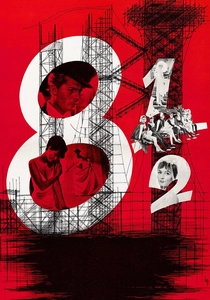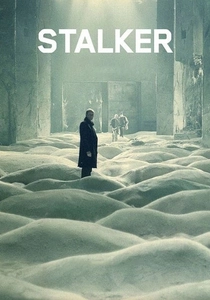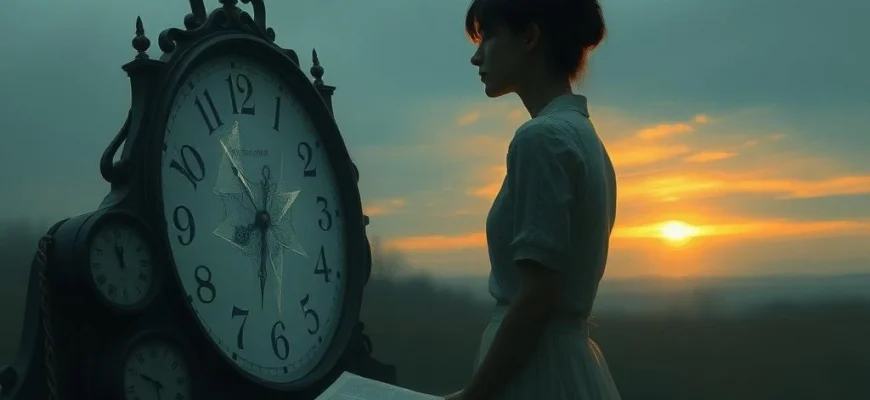If you were captivated by the poetic and enigmatic beauty of 'Mirror' (1975), Andrei Tarkovsky's deeply personal masterpiece, you're likely craving more films that blend memory, dreams, and reality with such artistry. This article explores 10 movies and shows that share 'Mirror's' introspective depth, visual splendor, and haunting storytelling, perfect for fans of cinematic poetry.

The Seventh Seal (1957)
Description: A symbolic and existential meditation on life, death, and faith, featuring striking black-and-white cinematography and allegorical storytelling.
Fact: The chess game with Death was improvised during filming, with the actor playing Death genuinely learning the game on set.
 Watch Now
Watch Now 
Hiroshima Mon Amour (1959)
Description: A lyrical and fragmented exploration of memory, trauma, and love, blending personal and historical narratives through poetic dialogue and evocative imagery.
Fact: The film's opening sequence features real documentary footage of Hiroshima's aftermath, intercut with scenes of the lovers' embrace.
 Watch Now
Watch Now 
Last Year at Marienbad (1961)
Description: A hypnotic and enigmatic film that plays with time, memory, and perception, using repetitive dialogue and surreal, baroque visuals to create a dreamlike atmosphere.
Fact: The film's labyrinthine hotel was a composite of several real European palaces, edited together to create a disorienting effect.
 Watch Now
Watch Now 
Ivan's Childhood (1962)
Description: A haunting and poetic war film that contrasts the innocence of childhood with the brutality of war, using dream sequences and stark imagery to convey emotional depth.
Fact: The film's young protagonist was played by a non-professional actor who was discovered by the director in a Moscow school.
 Watch Now
Watch Now 
8½ (1963)
Description: A self-reflexive and visually inventive film that blurs the lines between dreams, memory, and reality, exploring artistic creation and personal turmoil.
Fact: The title refers to the number of films director Federico Fellini had made up to that point (seven features and two shorts).
 Watch Now
Watch Now 
Persona (1966)
Description: A psychological and visually experimental film that explores identity, duality, and the fragility of the human psyche through fragmented storytelling and stark imagery.
Fact: The film's iconic opening sequence includes a brief shot of an erect penis, which was highly controversial at the time of release.
 Watch Now
Watch Now 
The Color of Pomegranates (1969)
Description: A visually stunning and symbolic film that eschews traditional narrative in favor of poetic tableaux, exploring themes of art, spirituality, and national identity.
Fact: Each frame of the film is meticulously composed like a painting, with many scenes directly referencing Armenian religious art and medieval miniatures.
 Watch Now
Watch Now 
Solaris (1972)
Description: A deeply philosophical and introspective film that examines memory, love, and the nature of reality through slow, hypnotic storytelling and striking visuals.
Fact: The ocean planet Solaris was created using a combination of liquid metal, dyes, and magnetic fields to achieve its surreal, ever-changing appearance.
 Watch Now
Watch Now 
Stalker (1979)
Description: A meditative and visually poetic exploration of human consciousness, desire, and existential questioning, set in a mysterious and dreamlike landscape.
Fact: The film was shot twice because the original footage was accidentally destroyed during development. The Zone's eerie atmosphere was achieved by filming in abandoned industrial sites.
 Watch Now
Watch Now 
The Sacrifice (1986)
Description: A haunting and spiritual film that blends personal crisis with metaphysical themes, featuring long, contemplative takes and a dreamlike narrative structure.
Fact: The entire film was shot on location in Sweden, and the famous burning house scene was done in a single take with no special effects.
 Watch Now
Watch Now 








